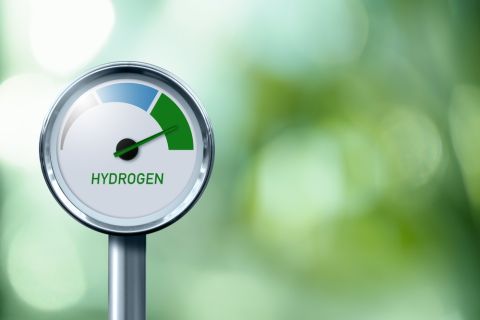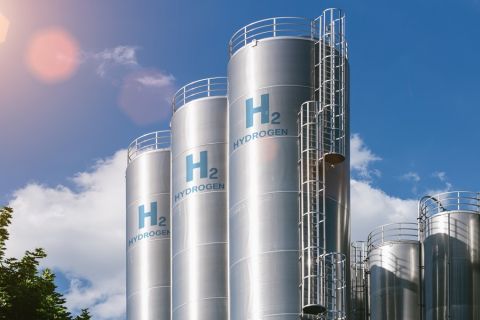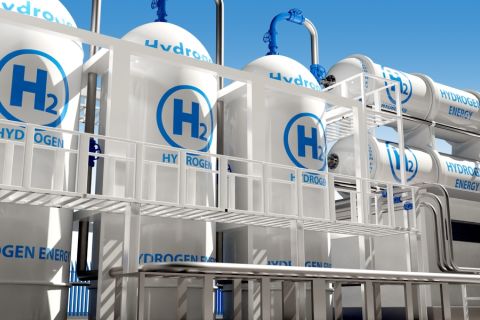Anadarko Petroleum Corp. has become the biggest prize in the energy industry in part because of lagging oil production despite large land holdings in the top U.S. shale field.
Occidental Petroleum Corp. and Chevron Corp., two of the largest oil and gas producers in the Permian Basin shale field by production volumes, argue they can best squeeze more oil from Anadarko's 240,000 acres.
On April 29, Anadarko agreed to start negotiations with Occidental over a bid that valued the company at $38 billion in cash and stock. It earlier struck an agreement to sell itself to Chevron for $33 billion.
RELATED: Occidental Petroleum’s Recent Takeover Bid Catches Anadarko’s Attention
Anadarko became the prize because of its large holdings in the southwestern U.S., and their lack of development. It holds "some of the best undrilled well locations in the basin," estimates energy researcher Drillinginfo.
Shares in The Woodlands, Texas-based company rose slightly on April 29 to close at $72.93. That was up from $46.80 on April 11, the day before the Chevron deal was announced. However, the shares were down nearly 26% in the year prior to the deal.
The company's Permian wells produce less oil and gas per-foot drilled than either Chevron or Occidental, according to consultancy Rystad Energy, leaving room for both to increase its output.
Each Anadarko well delivered $1.6 million in revenue in the first three months of its production in the region, compared with $4.5 million for Occidental and $3.5 million for Chevron, according to analysts at Robert W. Baird.
The company ranked 48 out of 50 oil producers in the Delaware portion of the Permian by average revenues per well. It "has consistently ranked as one of the worst productivity per well companies in the Delaware," Baird analysts wrote this month. Anadarko did not respond to a request for comment.
Chevron has targeted Anadarko for its shale assets, deepwater Gulf of Mexico properties and a LNG project off the coast of Africa. But Occidental CEO Vicki Hollub last week said that for Occidental, “the value of this is in the shale."
Analysts say Anadarko's Permian drilling has not made the shift to what the shale industry calls manufacturing mode, or drilling and connecting many wells at once, said Kris Nicol, a research director at Wood Mackenzie.
That lack of activity means a buyer has plenty of space to drill more, Nicol said.
"It's not like it's been manufactured already," he said.
Both suitors hope their greater efficiency will lead to cost savings. Occidental last week estimated it could squeeze $2 billion per year in cost synergies from the deal; Chevron said it would save $1 billion a year.
Both Occidental and Chevron have proven to be efficient at shale production, and either would create synergies in a merger with Anadarko, said Artem Abramov, head of shale research at Rystad Energy.
"It is a value creation regardless of how it eventually evolves."
Occidental holds around 2.7 million acres in the Permian Basin and divides its business between shale and conventional well production. Chevron holds around 2.3 million acres in the Permian Basin and owns much of the underlying mineral rights as well, according to Drillinginfo, another cost savings.
RELATED: Chevron, Anadarko Petroleum $33 Billion Megadeal Rocks Upstream Landscape
Anadarko's acreage is next to Chevron's on the Texas-New Mexico state line. Occidental holds Permian land just to the north and south. Whichever company completes the deal would become the Permian's largest producer, said Ted Hall of researcher Kayrros SAS.
Recommended Reading
Shell Taps Bloom Energy’s SOEC Technology for Clean Hydrogen Projects
2024-03-07 - Shell and Bloom Energy’s partnership will investigate decarbonization solutions with the goal of developing large-scale, solid oxide electrolyzer systems for use at Shell’s assets.
Energy Transition in Motion (Week of March 1, 2024)
2024-03-01 - Here is a look at some of this week’s renewable energy news, including Chevron’s plans for a solar-to-hydrogen facility in California.
Bill Gates: ‘A Heroic Effort’ is Beginning, but Climate Goals Still Won’t be Hit
2024-03-26 - Bill Gates said during CERAWeek by S&P Global that the energy transition was picking up speed but still wouldn’t be able to achieve the climate goals established under the Paris Agreement of 2015.
Tangled Up in Blue: Few Developers Take FID on Hydrogen Projects
2024-04-03 - SLB, Linde and Energy Impact Partners discuss hydrogen’s future and the role natural gas will play in producing it.
Baker Hughes Marks Hydrogen Milestones
2024-01-29 - The energy technology company is involved with several hydrogen projects as it works to accelerate the hydrogen economy.





